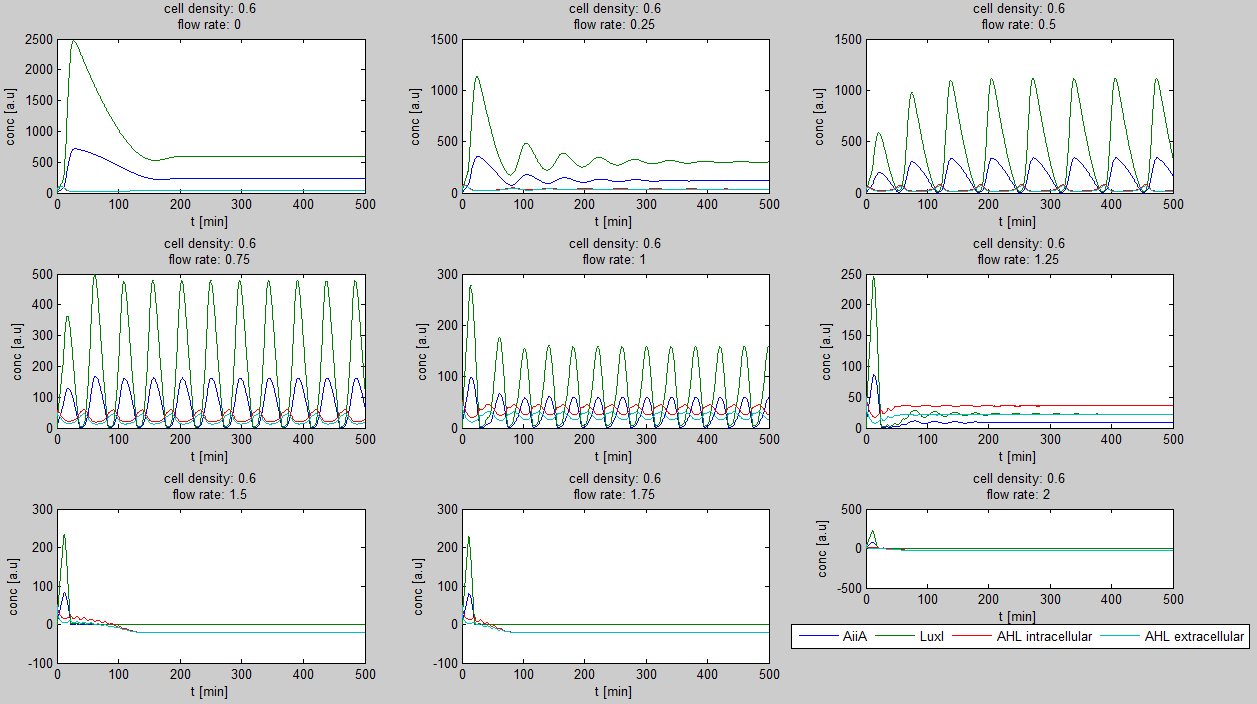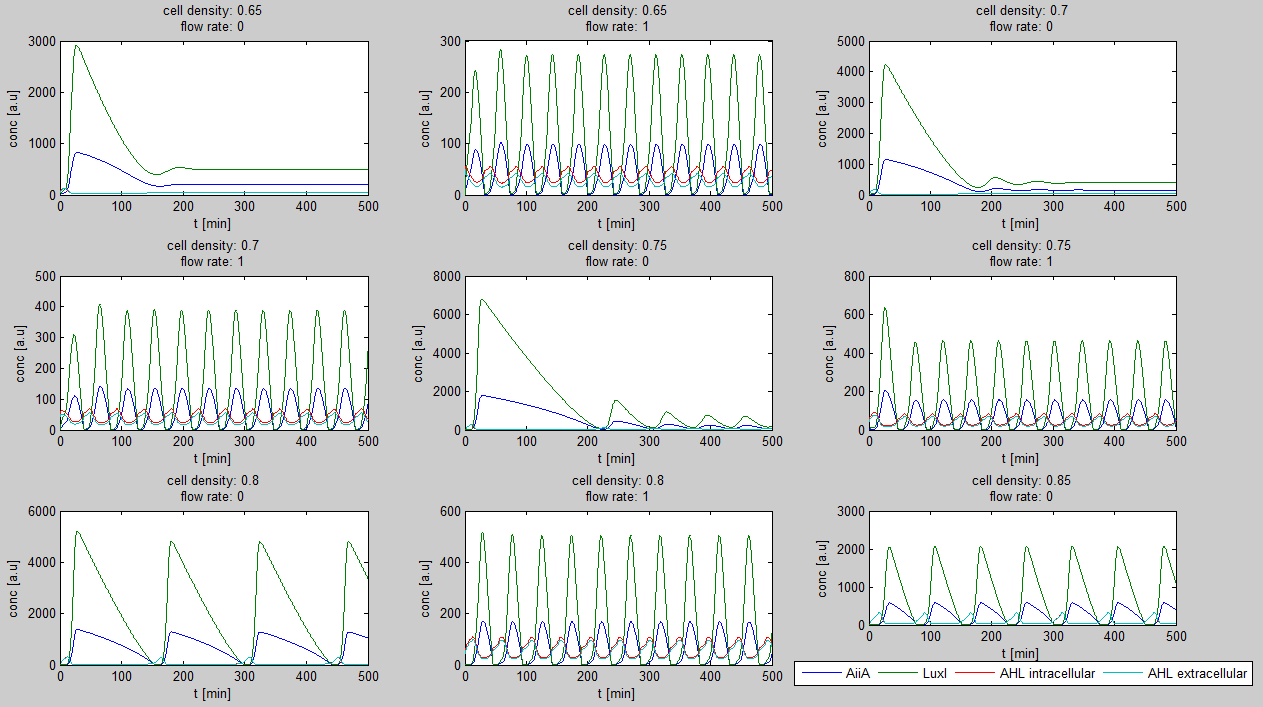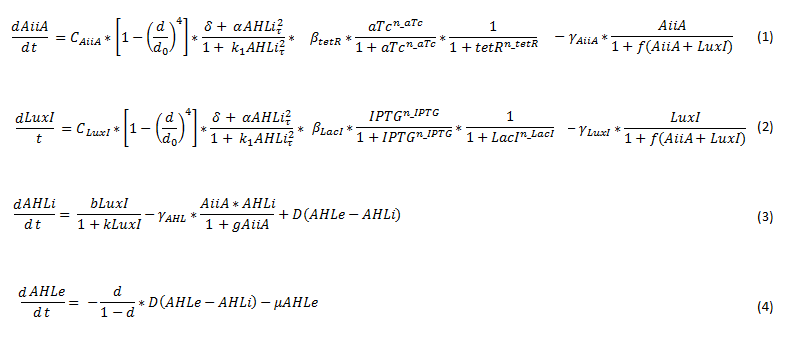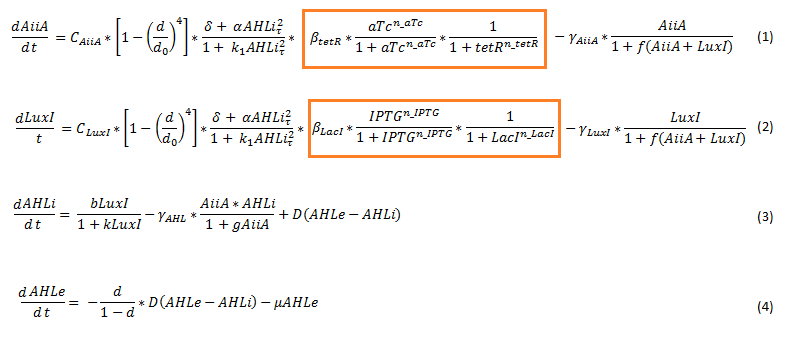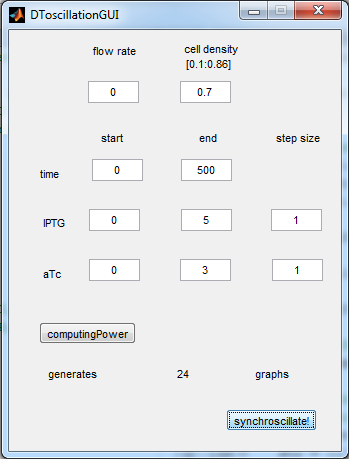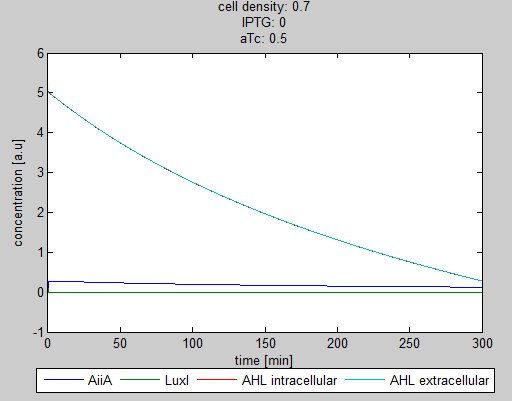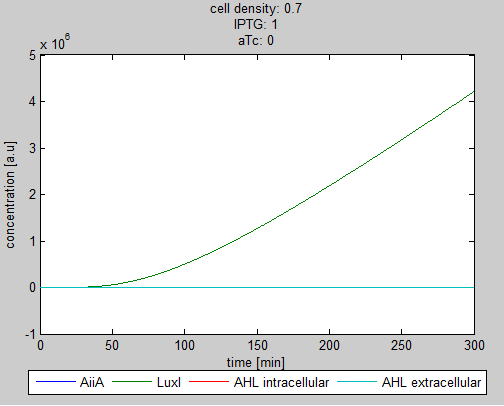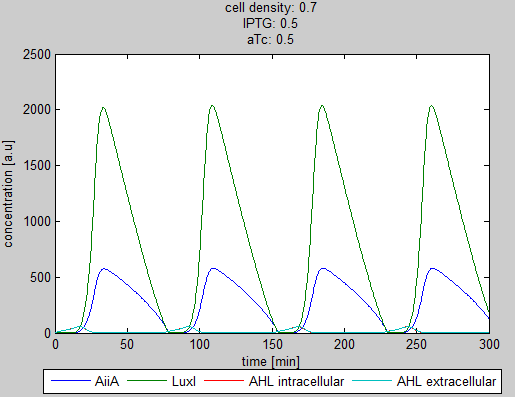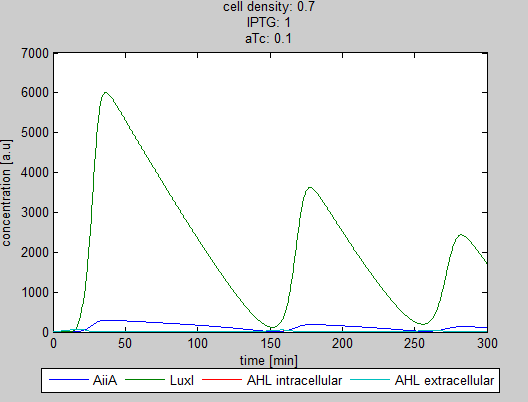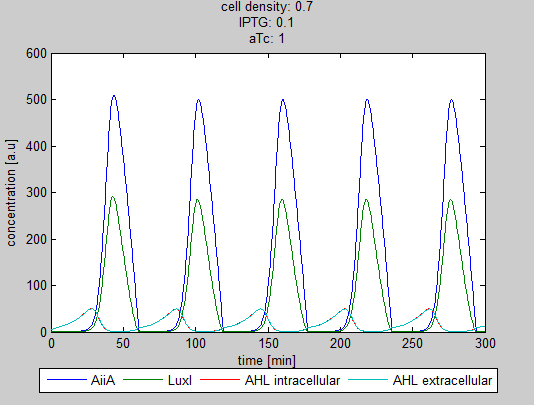Team:Wageningen UR/Project/ModelingProj1
From 2011.igem.org
(→Modeling synchronized oscillations) |
(→Modeling synchronized oscillations) |
||
| Line 127: | Line 127: | ||
Since the lacI repressed hybrid promoter used for this system was designed by the Tokyo iGEM 2007 team [3], the additional terms were derived according to their model. The tetR repressor was then modeled using the same template. The set of equations seen above therefore integrates the features of both models. It does not include differential equations for LuxR, LacI (represses LuxI) and tetR (represses AiiA). For the model we assume that these proteins are constitutively produced. | Since the lacI repressed hybrid promoter used for this system was designed by the Tokyo iGEM 2007 team [3], the additional terms were derived according to their model. The tetR repressor was then modeled using the same template. The set of equations seen above therefore integrates the features of both models. It does not include differential equations for LuxR, LacI (represses LuxI) and tetR (represses AiiA). For the model we assume that these proteins are constitutively produced. | ||
| - | The equations suggest slowing down of protein synthesis at higher cell densities d (first term in the LuxI and AiiA equations). The Hill function including a tau describe the delayed production of AiiA and LuxI depending on the internal AHL concentration at a past time point as explained above. Gamma represents the degradation rate of the respective proteins. LuxI produces AHL, this dependency is shown in the first term of the differential equation for the internal AHL concentration. The terms proportional to D show the diffusion of AHL into and out of the cell. The flow rate mu, which removes extermal AHL, is only relevant when actually applying flow and is set to 0 for most of our simulations. [1] | + | The equations suggest slowing down of protein synthesis at higher cell densities d (first term in the LuxI (eq 1) and AiiA (eq2) equations). The Hill function including a tau describe the delayed production of AiiA and LuxI depending on the internal AHL concentration at a past time point as explained above. Gamma represents the degradation rate of the respective proteins. LuxI produces AHL, this dependency is shown in the first term of the differential equation for the internal AHL concentration (eq3). The terms proportional to D show the diffusion of AHL into and out of the cell. The flow rate mu, which removes extermal AHL, is only relevant when actually applying flow and is set to 0 for most of our simulations. [1] |
The terms which were added to the original set of equations showing the influence of the repressor and activator are highlighted below. | The terms which were added to the original set of equations showing the influence of the repressor and activator are highlighted below. | ||
Revision as of 22:41, 21 September 2011
 "
"



